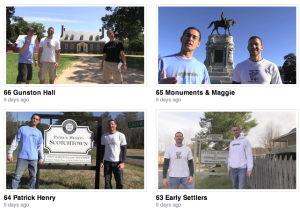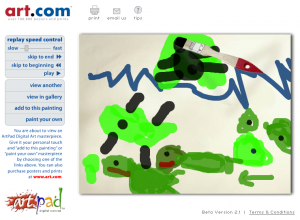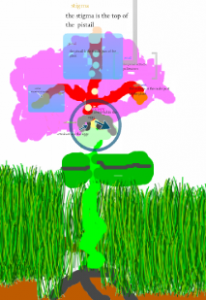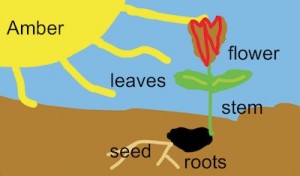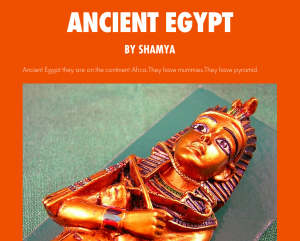4th Grade Choose-Your-Own Adventure Stories
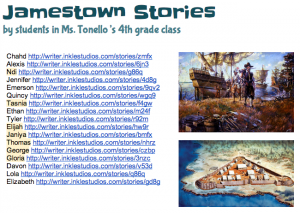 Fourth grade students in Ms. Tonello’s class at Holladay Elementary created choose-your-own adventure stories today about Jamestown using Inklewriter. They’ve learned about all the problems the Jamestown settlers had (VS.3), but what if the settlers made different choices? How would the outcomes be different? First I showed them a couple of examples to show them how Inklewriter works: What if one of the charters were revoked? Click here to see. What choices did a settler have when his wife became sick from drinking the water? Click here to see. Once the students understood the concept, I told them to think of a Jamestown problem and two possible choices for solving the problem. We wrote our stories in Pages so that we could save them if the website had any glitches (which they inevitably do). Then we just copied and pasted our text into Inklewriter. We also found pictures online to link in our stories. The students’ stories turned out great. You can see them all here. Reading each others’ stories gives students a fun way to review the Jamestown struggles and practice making predictions. If you’d like to try Inklewriter with your class, I’ve created a brief how-to guide that you can download here.
Fourth grade students in Ms. Tonello’s class at Holladay Elementary created choose-your-own adventure stories today about Jamestown using Inklewriter. They’ve learned about all the problems the Jamestown settlers had (VS.3), but what if the settlers made different choices? How would the outcomes be different? First I showed them a couple of examples to show them how Inklewriter works: What if one of the charters were revoked? Click here to see. What choices did a settler have when his wife became sick from drinking the water? Click here to see. Once the students understood the concept, I told them to think of a Jamestown problem and two possible choices for solving the problem. We wrote our stories in Pages so that we could save them if the website had any glitches (which they inevitably do). Then we just copied and pasted our text into Inklewriter. We also found pictures online to link in our stories. The students’ stories turned out great. You can see them all here. Reading each others’ stories gives students a fun way to review the Jamestown struggles and practice making predictions. If you’d like to try Inklewriter with your class, I’ve created a brief how-to guide that you can download here.




